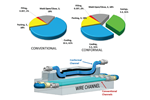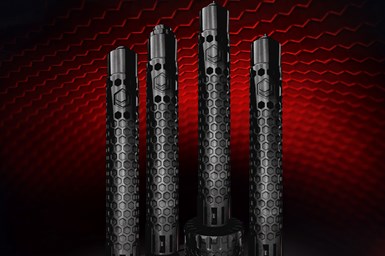3D-Printed Hot Runner Nozzles Yield Consistent Temperature Profile
Monolith hot runners produced by DMS through a combination of SLS and AI, facilitate seamless integration with the mold and challenging material processing.
Selective laser melting (SLM) metal 3D printing, combined with artificial intelligence (AI), produce DMS Monolith hot runner nozzles, tailored precisely to part and process specifications.
According to the company, the innovation lies in the 3D-printed air spaces that provide insulation to the nozzles from the mold, ensuring a consistent temperature profile. This capability facilitates the processing of challenging materials within narrow temperature windows, while simultaneously reducing energy consumption and heat input into the injection mold, enabling more economical and sustainable part production.
Nozzles are delivered at the optimal length for a specific mold design at no additional cost and each nozzle is distinctively produced to seamlessly integrate with the mold, including an imprinted union nut to simplify installation and maintenance.
In addition, the hot runner manifold supports are made with insulation through the SLM process, branded as Energy Blockers. This enhancement leads to a 52% reduction in overall system energy consumption compared to conventional hot runner systems using titanium ceramic supports.
Witosa products are now available in the U.S. at DMS’ website.
Related Content
-
6 Ways to Optimize High-Feed Milling
High-feed milling can significantly outweigh potential reliability challenges. Consider these six strategies in order to make high-feed milling successful for your business.
-
Hands-on Workshop Teaches Mold Maintenance Process
Intensive workshop teaches the process of mold maintenance to help put an end to the firefighting culture of many toolrooms.
-
The Secrets to Hard Milling Success
The Secrets to Hard Milling Success















